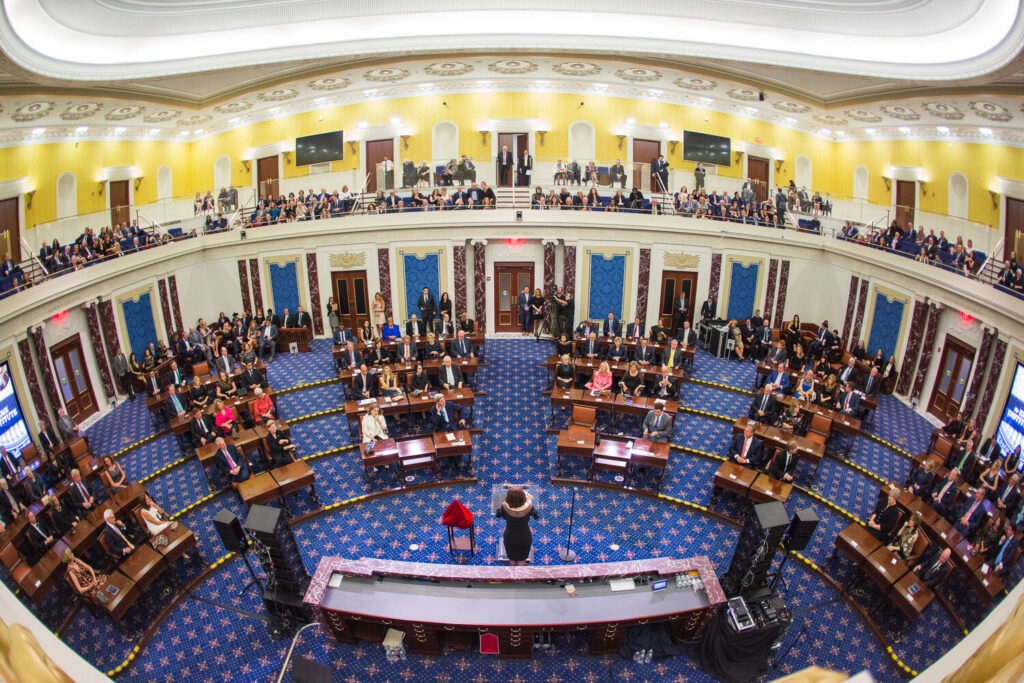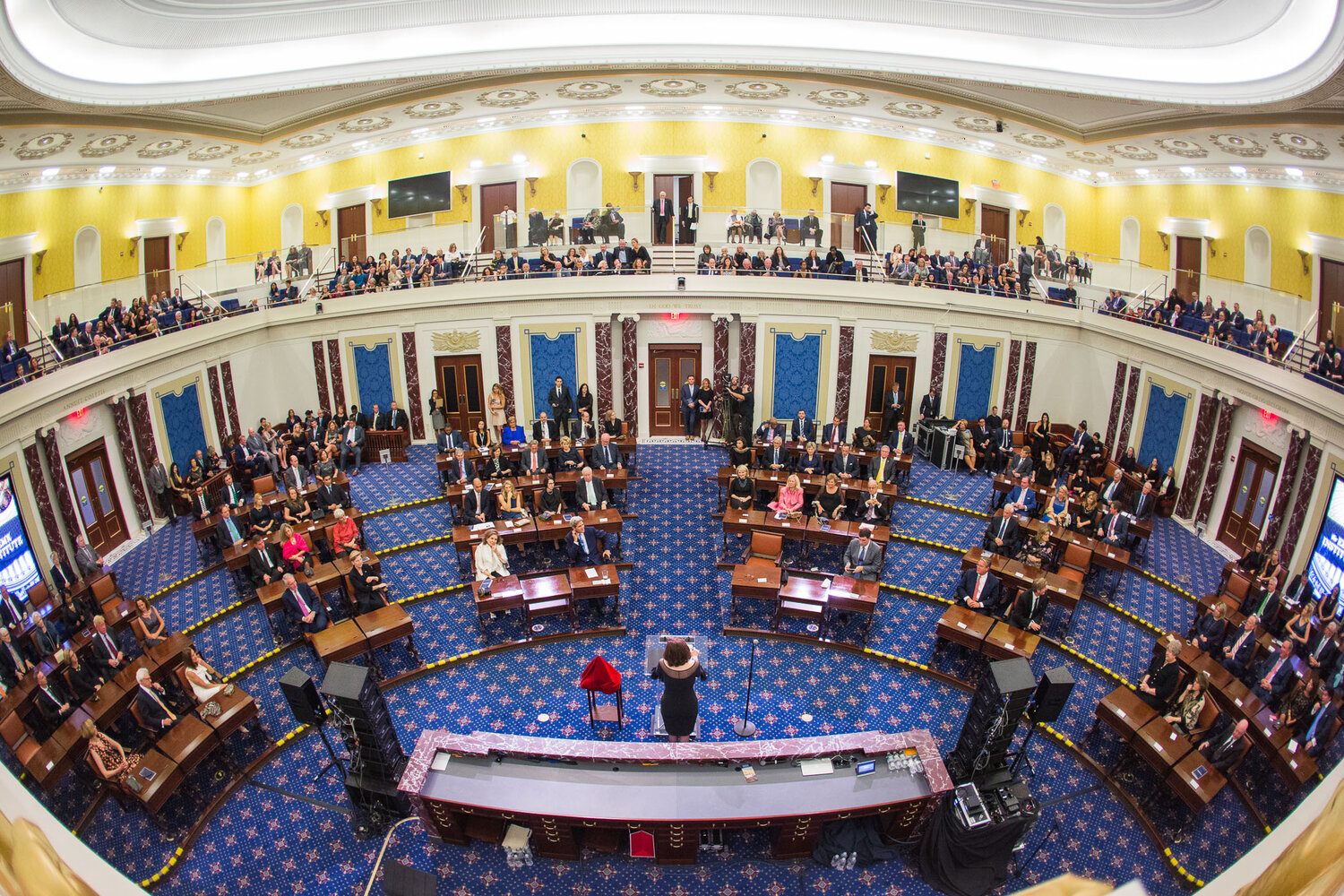Okay, so Social Security isn’t exactly the sexiest topic at brunch, but hang tight—because this new bill? It’s a plot twist no one saw coming. Officially dubbed the “Big Beautiful Bill” (yes, really), this sweeping legislation just dropped like the Beyoncé of government reform, and whether you’re 27 or 67, it could totally mess with your money, health care, or retirement dreams.
From rule changes that might ghost your student loan forgiveness to tax breaks that seem tailor-made for people named “Chad with a trust fund,” this bill is packed with stuff that affects how you live, work, age, and save. Some parts are sneakily helpful, others… not so much. But one thing’s for sure: it’s time to stop assuming Social Security is just something your grandparents yell about on Facebook. This is your cheat sheet to what’s actually changing—and why you should care before it hits your wallet, your benefits, or your future.
1. COLA Gets a Modest Bump

Starting January 2025, Social Security and Supplemental Security Income (SSI) benefits will see a 2.5% increase. This adjustment aims to help beneficiaries keep up with inflation, ensuring that their purchasing power doesn’t erode over time. While it’s a smaller increase compared to previous years, every bit helps in maintaining financial stability for retirees.
That said, don’t spend that extra 2.5% all in one place—unless it’s on something thrilling like prescription refills or heating bills. As noted by Kiplinger, the COLA increase is calculated using the Consumer Price Index for Urban Wage Earners and Clerical Workers (CPI-W), and with inflation tapering a bit, the raise is more of a polite nod than a windfall. Still, it’s proof that Social Security isn’t totally asleep at the wheel.
2. Full Retirement Age Now at 67

If you were born in 1960 or later, your full retirement age for Social Security benefits has officially shifted to 67. This change means that claiming benefits before this age could result in reduced monthly payments. It’s essential to factor this into your retirement planning to ensure you receive the maximum benefits you’re entitled to.
And let’s be real: many of us aren’t exactly stashing away 15% of our income for retirement, so knowing when to pull the trigger matters. According to FinanceBuzz, taking benefits at 62 could slash your monthly check by as much as 30%—yikes. Waiting until 67 could be the difference between scraping by and subscribing to more than one streaming service in your golden years.
3. $4,000 Social Security Deduction for Seniors

The new bill introduces a $4,000 deduction on Social Security income for seniors aged 65 and up. This tax break aims to provide additional financial relief to retirees, potentially reducing their taxable income and increasing their net benefits. It’s a move designed to ease the financial burden on older Americans.
For many seniors, this could mean a noticeable boost in monthly disposable income—finally, a break that doesn’t come with a copay. As reported by The US Sun, the deduction is one of the headline-friendly components of the bill that’s likely to gain popularity across the aisle. For once, it’s not just rhetoric—it might actually leave more money in your wallet.
4. Repeal of WEP and GPO

The Windfall Elimination Provision (WEP) and Government Pension Offset (GPO) have been repealed, thanks to the Social Security Fairness Act. This change means that individuals who had their benefits reduced due to receiving a pension from non-Social Security-covered employment will now receive full benefits. It’s a significant win for many public sector workers.
Teachers, firefighters, and municipal employees—this one’s for you. For years, these folks were penalized simply for having a government pension, but CalPERS (California Public Employees’ Retirement System) praised the repeal as a long-overdue correction to an unfair system. Translation: it’s finally time for thousands of retirees to get the full benefits they earned—and maybe even celebrate with something better than store-brand cake.
5. Introduction of “Trump Accounts” for Newborns

The bill introduces $1,000 “Trump Accounts” for every newborn, aiming to encourage early savings for future expenses like education or home purchases. These accounts are designed to grow over time, providing a financial head start for the next generation. It’s a move that underscores the importance of early financial planning.
Think of it as a government-funded baby starter pack, except instead of diapers, it’s compound interest. These “Trump Accounts” might sound like a branding gimmick, but they’re real and potentially impactful. Business Insider breaks down how the accounts could function similarly to existing child savings programs, with interest earned over time and the potential for parental contributions. Hey, it’s not quite a trust fund—but it’s not nothing.
6. Stricter Work Requirements for Medicaid and SNAP

The legislation imposes stricter work requirements for Medicaid and the Supplemental Nutrition Assistance Program (SNAP). Adults under 65 will need to work, study, or volunteer to qualify, potentially affecting millions of beneficiaries. This change aims to promote self-sufficiency but has raised concerns about access to essential services.
Supporters argue it incentivizes independence and reduces long-term reliance on government aid. But critics worry this could leave vulnerable populations—like those with invisible disabilities or inconsistent gig work—without crucial healthcare and nutrition support. And let’s be honest, navigating bureaucratic proof of “work” while juggling childcare and underpaid temp jobs? That’s a full-time job on its own.
7. Elimination of Gender-Affirming Care Coverage

The bill bans Medicaid and CHIP from covering gender-affirming care for individuals of all ages. This includes treatments like hormone replacement therapy and surgeries. The move has sparked significant controversy and concern among LGBTQ+ advocacy groups.
For trans and nonbinary individuals who rely on public healthcare, this is more than just policy—it’s personal. It could force people to delay or entirely forgo care that’s been shown to significantly improve mental health and overall well-being. The fallout could also hit younger folks especially hard, disrupting continuity of care and putting more pressure on already-strained support systems.
8. Increased Defense and Border Security Spending

A significant portion of the bill allocates funds to defense and border security, including $47 billion for a border wall and $25 billion for an advanced missile defense system. These expenditures reflect a focus on national security but have implications for federal budget allocations.
What’s controversial is what gets sacrificed to make room for this spending spree. Critics point out that while missiles and walls get billions, social programs face cuts or stricter eligibility. It’s a clear signal about shifting priorities—and for many, it feels like an arms race is being prioritized over accessible healthcare, education, and safety nets.
9. Changes to Student Loan Forgiveness

The bill replaces existing student loan forgiveness programs with more stringent repayment options. This shift could affect millennials carrying student debt, potentially altering their repayment plans and financial strategies.
Under the new rules, forgiveness takes longer to earn and applies to fewer borrowers. That means monthly payments could be higher for some, and the dream of being debt-free by your 40s? Might need a rain check. For those already struggling to buy homes or start families thanks to crushing debt, this change stings—and could delay major life milestones even further.
10. Tax Cuts Favoring High-Income Earners

The legislation extends and expands tax cuts primarily benefiting high-income earners, including temporary tax exemptions for tips, overtime, and elder deductions. Critics argue that these measures disproportionately benefit the wealthy while reducing support for low-income Americans.
The cuts might sound great in a vacuum—who doesn’t love paying less in taxes?—but zoom out, and it’s clear the bill gives the biggest breaks to those already doing fine. Meanwhile, working-class and middle-income households don’t get much relief, and some may even see higher effective costs in areas like healthcare or food assistance. It’s the old trickle-down story… and for many, it’s still not raining.
11. Potential Loss of Health Coverage for Millions

Due to the combined effects of Medicaid cuts and stricter eligibility requirements, it’s estimated that up to 14 million Americans could lose health coverage. This significant reduction in coverage raises concerns about access to healthcare services for vulnerable populations.
We’re talking about single parents, part-time workers, and people with chronic illnesses suddenly needing to navigate life without insurance. It could mean more crowded emergency rooms, delayed care, and preventable conditions spiraling out of control. For a country already grappling with healthcare affordability, this move feels like a step backward—fast.
12. Increased Federal Deficit

Economists project that the bill could increase the federal deficit by up to $5 trillion over the next decade. This surge in national debt may have long-term implications for the economy and future government spending.
While some lawmakers argue that economic growth will eventually balance the books, others warn that rising deficits mean future cuts to Medicare, Social Security, or other essentials. Translation: today’s tax breaks and defense splurges might be tomorrow’s benefit reductions. It’s like putting a round of drinks on a credit card and hoping inflation picks up the tab later.
This article is for informational purposes only and should not be construed as financial advice. Consult a financial professional before making investment or other financial decisions. The author and publisher make no warranties of any kind.









